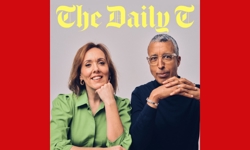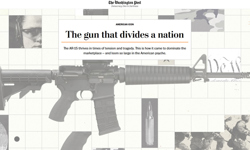"It's nice to be in a room of believers, as I always seem to be the last man standing touting print,” says Phillip Crawley.
Mr Crawley, CEO of the Globe and Mail in Canada, is indeed an ambassador for newspapers and print. He had ‘believers’ from 22 countries join him at the WAN-IFRA 2011 Printing Summit in Mainz, Germany, to reaffirm prints vital role today and in the future.
Summaries of all conference presentations can be found at the WAN-IFRA website.
Many newspapers and printers are convinced that offering semi-commercial and even commercial products to readers will help cement their future prosperity, thanks in large part to the available printing and mailroom technologies and better research in market orientation.
And most speakers and participants agreed that newspapers must continue to invest to continue to secure the majority of total revenues they still derive from print.
The Globe and Mail is a prime example: the company relaunched its entire newspaper last October. At the core of the multi-platform launch was a completely redesigned newspaper, leveraging the capabilities of the new presses (KBA Commander CT) that were bought and installed at Transcontinental, which has printed the Globe and Mail since 1995. Globe and Mail has a contract with Transcontinental until 2028.
“The day those presses started up in October in Toronto was one of the most exciting days of my career,” says Mr. Crawley.
The results in six months since the launch are startling, Mr. Crawley says:
• The newspaper has increased circulation by 4.4 percent -Its weekendGlobe Life semi-commercial product has attracted 100 new advertisers and revenues are up 45 percent since its launch.
• Its new glossy Globe Style magazine has increased revenue 125 percent since its launch and is attracting advertisers normally not associated with newspapers. “L’Oreal is spending about 50,000 to 100,000 Canadian dollars a week in this edition,” he says.
• And readers overwhelmingly like the new narrow format and design, spending more time with each edition during the week and weekends.
Kasturi Balaji, Managing Director of Kasturi & Sons, publishers of The Hindu in India which prints a number of semi-commercial newsprint products using heatset presses, says newspapers need to reinforce their value in print today more than ever.
“When 85 percent of our revenues still comes from print, we better produce the best quality products possible to impress our readers and advertisers and there are a number of ways to do that today,” he says.
By maximising printing capacity, using automation where it makes sense, making the most of a pressroom and mailroom’s capabilities, newspapers can create new market segments in print for the long term, says Philip Brännlund, Managing Director of Eskilstuna-Kurirens Tryckeri, a printing house in Sweden. The company offers a number of semi-commercial products.
“I think we need to diversify our business as much as possible, especially for the long term. Our idea is that the high-quality products with glossy covers give us the opportunity to act in a different segment and also in a much higher price scale then normal coldset products.”
Matthias Tietz, Technical Director of Rheinisch-Bergische Druckerei in Germany, goes a step further in how he sees his printing plant’s role for the future.
“We will continue to look for a number of niche products to print. Before we were a newspaper printer. Today we are a commercial printer, producing newspapers as well.”
Also in the future, technologies like digital printing and augmented reality will offer newspapers new opportunities as costs and technologies advance.
WAN-IFRA offers a wide variety of conferences, training workshops and other events covering all aspects of news publishing, both digital and in print.










